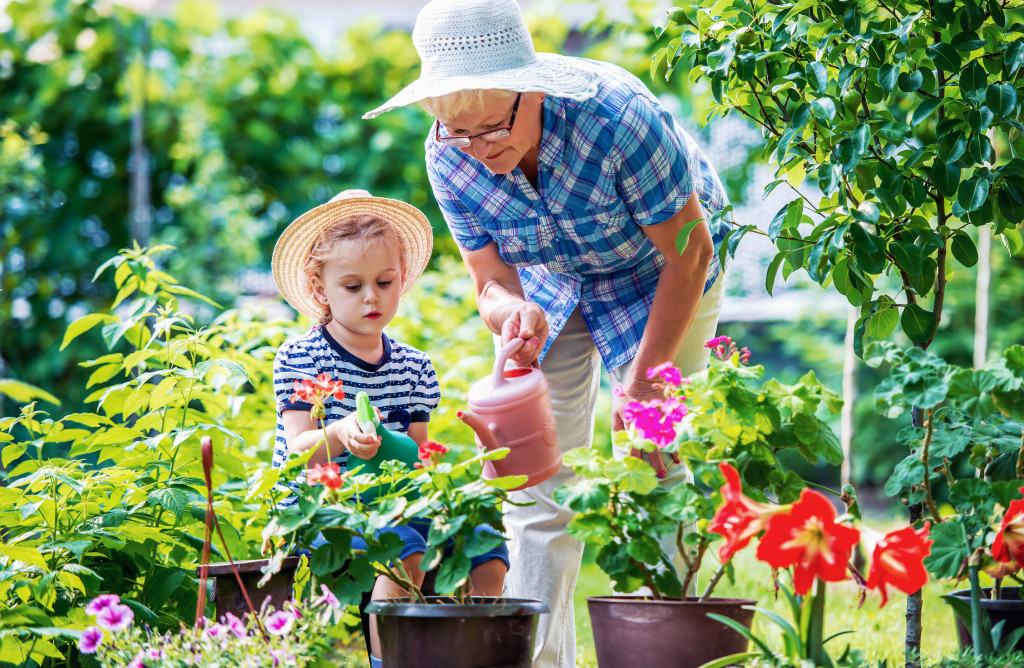A garden is a beautiful place to relax, entertain, and enjoy the outdoors. It allows you to express your creativity and build a space that is unique to you. If you’re lucky enough to have your own green space, you might wonder how to make it into a haven you can be proud of. Here are six tips to get you started on your gardening journey.
Start with a plan
Knowing what you want your garden to look like before you start planting is essential. Do some research on the plants that will do well in your area and start sketching a design. By mapping out your garden, you can ensure that each plant has the space it needs to grow and that all of your plants will complement each other. Once you have a basic plan, you can add visual interest. One way to do this is by choosing plants with variegated leaves or colorful blooms. Another option is to add a few exciting sculptures or works of art. However, if you decide to enhance your garden, remember that even the simplest of greens can be strikingly beautiful with a bit of thought and care.
Invest in your pathways
Your garden’s pathways are an essential part of its design and function. Not only do they provide a way for you to get around, but they can also help to define different areas of your garden and add visual interest. When choosing materials for your pathways, it’s important to consider both function and aesthetics. For example, concrete pathways can help to define garden spaces and create a sense of order. In addition, they are durable and easy to maintain, which makes them an excellent investment for any home gardener. Just hire a reputable contractor who can ensure that your pathways are correctly installed and will last for many years to come.
Choose the right plants

Once you know what design you’re going for, it’s time to choose the right plants. In addition to researching which plants will do well in your climate, consider the amount of sunlight and water they’ll need and how big they’ll grow. You don’t want your garden to be overcrowded, so leave plenty of room for each plant to reach its full potential. In general, the best plants for gardens are drought-tolerant, low-maintenance varieties. If you’re not sure which plants will work best for your space, here are some suggestions:
- Shrubs
- Evergreens
- Roses
- Perennials
- Ground covers
- Annuals
When selecting plants, it’s also a good idea to look at the different textures and colors they offer. This will help you create a diverse and exciting garden without having to buy too wide different varieties.
Amend the soil
One of the best ways to make your garden more beautiful is to start with the basics: the soil. Healthy soil is essential for vigorous plant growth and can help prevent problems like weeds and pests. One way to ensure healthy soil is to amend it regularly. You can add organic matter, such as manure or compost. These amendments help to improve drainage and aeration and increase the level of nutrients available to plants. In addition, they can also help to improve the structure of the soil, making it less likely to be eroded by wind or rain. As a result, amending the soil is essential in creating a more beautiful garden.
Fertilize regularly
Any gardener knows that flowers and plants need nutrients to grow healthy and strong. Fertilizer provides these essential nutrients, and regular fertilization can make a big difference in the appearance of your garden. Healthy plants are more resistant to pests and diseases and tend to produce more flowers. In addition, fertilizer helps to promote root growth, resulting in a fuller, more lush appearance. There are many different types of fertilizer available, so it’s important to choose one that is right for your plants. For best results, follow the manufacturer’s instructions carefully and fertilize regularly. With a little effort, you can make your garden more beautiful than ever.
Pull weeds regularly
Pulling weeds is one of the most important (and least glamorous) tasks of gardening. Weeds can quickly take over a garden, crowding out other plants and causing them to compete for resources like water and sunlight. They can also harbor diseases and pests, spreading to other plants. By pulling weeds regularly, you can help to keep your garden healthy and beautiful. Plus, it’s a great way to stay connected to your plants and get to know your garden’s ecosystem. So don’t be afraid to get your hands dirty! Pulling weeds can be a therapeutic and satisfying experience.
Final thoughts
These are the seven tips that can help you create a beautiful and inviting garden. Whether you’re starting from scratch or revamping an existing one, these tips will help ensure success. Remember that this should be a fun and rewarding experience, so take your time and enjoy the process.

